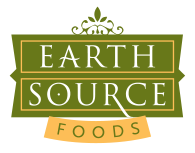Japanese style SILKEN (or Kinu) tofu is as delectable as it sounds. It is the smoothest and creamiest of all the tofu varieties with a ‘spoonable’ quality that means it can be eaten straight from the tub like yoghurt or custard. It is luscious, it is seductive and it is extremely addictive once you know what to do with it.
When many people think of tofu, FIRM or PRESSED tofu usually springs to mind (or even Momen tofu, which is the name of Kinu's sibling – read more about Momen here). Especially those new to tofu will seek out the firmer varieties that keep their shape in stirfries, casseroles and other ‘meaty’ dishes. But there’s one kind of tofu that is distinctly different and, therefore, serves different purposes.
Japanese SILKEN tofu – named after the traditional Japanese process of molding the tofu in silk-lined fabric – has its own unique texture and consistency because it is undrained, unpressed and the curds remain unseparated. It has the highest water content of all tofu, which means it is likely to come in plastic tubs. The really good SILKEN tofu (like Earth Source Foods, of course) is even poured and set in the tubs in which you purchase it.
As you’re possibly aware, quality tofu is essentially a delicate combination of premium soy milk and coagulants. SILKEN tofu, as produced by Earth Source Foods, uses a specific type of coagulant called ‘nigari’, which has been the Japanese ‘secret’ ingredient of SILKEN tofu for hundreds (if not thousands) of years.
Nigari is naturally derived from seawater after the sodium chloride has been removed and water evaporated. The chemical compound of nigari is magnesium chloride, which can look scary when on a product label but is actually a natural chemical compound – nothing nasty. In order to produce real Japanese SILKEN tofu, nigari is essential. Don’t accept any imitators.
Similar to other tofu, SILKEN can vary in quality depending on the manufacturing process and the type of soybeans used. That’s where you will notice a remarkable difference with Earth Source Foods where only non-GMO, bio-dynamic – The Super Organic – soybeans are used during carefully controlled manufacturing processes.
SILKEN tofu is worth tasting on its own first, before adding to food. Get to know your SILKEN tofu by eating a spoonful or just dipping it in soy sauce as a savoury snack or simply drizzling with honey for an instant sweet treat. Whatever you do, don’t press it like other tofu because your SILKEN tofu will turn to mush under the weight.
There are many things you can do with SILKEN tofu, one such thing is using it as an egg substitute. As a basic guide, consider one-quarter cup of SILKEN tofu as the equivalent of one egg in any given recipe. Served either cold or hot, you can also use SILKEN tofu in dips and spreads, soups (especially gently floating a spoonful in Japanese miso), sauces and toppings, omelettes, puddings and desserts.
So, now that you’ve made a friend of SILKEN tofu, how about trying to incorporate it in your daily cooking? We’ve compiled some recipes so you don’t even have to think about it…
TOFU BLUEBERRY & CASHEW SMOOTHIE
A delicious treat anytime or as a light dessert
VEGAN MAYONNAISE
An easy no-egg mayo that is quick to prepare and can be used in place of traditional mayonnaise as a spread, in salads or meal accompaniment
CREAMY VEGAN SALAD DRESSING
A versatile, alternative dressing for all salads, or drizzled on hot or cold vegetables
TAHINI & MISO TOFU DIP
A quick, tasty dip to serve as a pre-dinner nibble or an anytime snack with your favourite crackers or vegetable crudite.
SILKEN TOFU IN GINGER SYRUP WITH ORANGE
A deliciously light, tangy and easy to prepare tofu dessert


